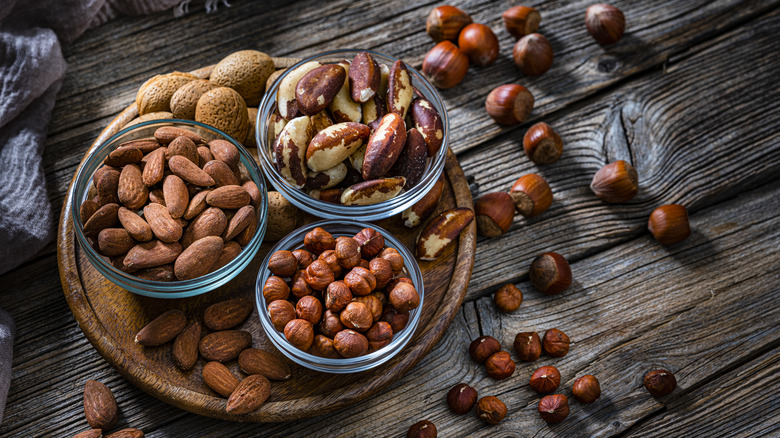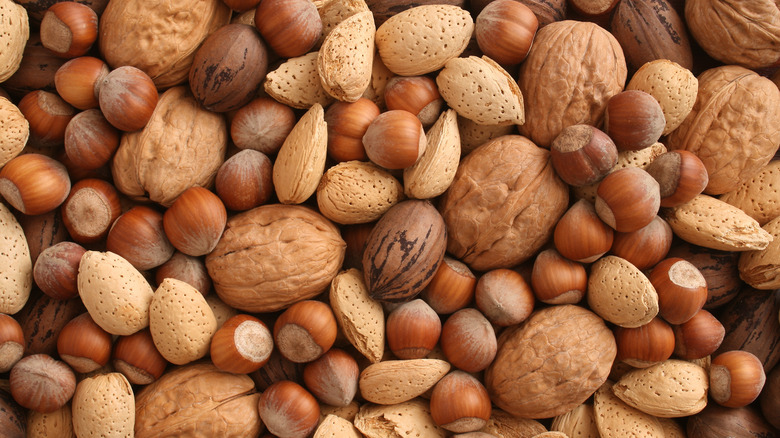Why It Isn't The Best Idea To Can Nuts At Home
Salmonella is bacteria that typically lives in human and animal intestines. It is spread through waste, and people become infected by eating contaminated food or drinking contaminated water. The most common symptoms are fever, abdominal cramps, and diarrhea, which can last from just a few days to up to a week. Although Salmonella originates in humans and animals, plants can become contaminated in a variety of ways, including through manure, contaminated water, post-harvest handling, contaminated surfaces, and more.
Salmonella outbreaks in ready-to-eat foods have driven scientists to reevaluate the bacteria's ability to survive in certain conditions. As a result, the guidelines for handling and preserving low-moisture foods, such as nuts, have been updated to include this new research, especially for foods preserved at home. For safety reasons, organizations such as the National Center for Home Food Preservation no longer recommend a procedure for canning nuts, with green peanuts in the shell the only exception.
Best way to store nuts at home
Just because the traditional canning process is no longer recommended for storing nuts in your home, that doesn't mean there are no options. For short-term storage — less than six months — refrigerating fresh nuts in a container with an air-tight seal is a suitable method. However, for longer and safer storage, the process is a little more involved.
First, make sure your nuts are safe and bacteria-free. Since Salmonella can be heat resistant in low-moisture foods, you must heat them to a temperature that will kill the bacteria. Preserving Food at Home recommends shelling your nuts, spreading them on a baking pan in a single layer, and heating them to 250 degrees. The nuts should be dry but not scorched, and you may need to stir them occasionally.
The other important step to storing nuts is only using jars that you have thoroughly sterilized. You can accomplish this by boiling them for 10 minutes. Individuals who live in higher altitudes should add one additional minute of boiling time per 1,000 feet of elevation.

